- Home
- Equipment Reviews
-
Amplification Digital Integrated Mono Block Preamplifier Phono Solid State Tube Analog Sources Cartridges Tape Tone Arms Turn Tables Digital Sources Digital Disc Players DACs Music Servers Streaming Music Services
-
Accessories Power Conditioners Room Accoustics Racks & Stands Audio Software Other iPod iPod Speakers iPod Headphones iPod Transports Headphones Over Ear On Ear In Ear Headphone Amplifier
-
- Audio News
- Event Reports
- California Audio Show, San Francisco
- Consumer Electronics Show
- T.H.E. Show
- Rocky Mountain Audio Fest
- AXPONA
- Salon Son & Image
- Hi-Fi Show & AV Expo
- High End
- Lone Star Audio Fest
- Capital Audio Fest
- TAVES - Toronto Audio Video Entertainment Show
- AK Fest
- Home Entertainment Show
- New York Audio $ AV Show
- Open House Events
- Spotlight
- Music
- The Columns
- 2024 California Audio Show
Interviewing Bill Dudleston of Legacy Audio on Legacy Audio Valor speaker system and Wavelet DAC/Preamp/Crossover
By: Doug Schroeder | August 2019
Latest Reviews & Audio News
-

PS Audio AirLens and DirectStream DAC Mk2 Review
(July 26, 2024) -

Audio Note UK Meishu Tonmeister 300B integrated amplifier, P3 Tonmeister stereo amplifier, M6 Phono Balanced Preamp Review
(July 12, 2024) -

Douglas Schroeder’s One Year Exploration of Digital Front End Systems
(June 25, 2024) -

Arya Audio Labs RevOpods Anti-Vibration Feet Review
(June 25, 2024) -

Lego Icons Retro Radio Review
(June 14, 2024) -
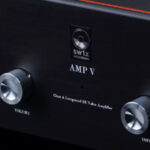
SW1X Audio Design AMP V “Titan” Special directly-heated triode integrated amplifier Review
(June 14, 2024) -
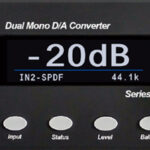
Bricasti Design Model 1 Series II D/A Converter and M5 Network Player Review
(May 24, 2024) -
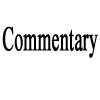
Star Wars – The Empire Strikes Back – In Concert, May 2, 2024
(May 20, 2024) -
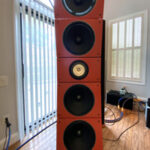
PureAudioProject Quintet15 with Voxativ AC-X field-coil open-baffle loudspeaker system Review
(May 20, 2024) -
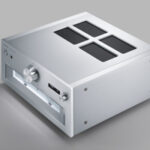
Technics SU-R1000 reference stereo integrated amplifier Review
(May 20, 2024) -
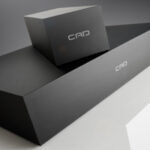
Computer Audio Design GC 1.1 & GC3.1 Ground Control external grounding systems Review
(May 20, 2024) -

Andy Grove of Audio Note UK on IO LTD
(March 23, 2024) -
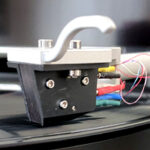
Audio Note UK IO Limited field-coil cartridge system Review
(May 20, 2024) -
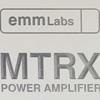
EMM Labs MTRX monoblock Input Board Upgrade Review
(March 7, 2024) -

May 2018 Sibelius Violin Concerto concert video via Berliner Philharmoniker Digital Concert Hall app
(February 16, 2024)
-
Categories
-
Amplification Digital Integrated Mono Block Preamplifier Phono Solid State Tube Analog Sources Cartridges Tape Tone Arms Turn Tables Digital Sources Digital Disc Players DACs Music Servers Streaming Music Services
-
Accessories Power Conditioners Room Accoustics Racks & Stands Audio Software Other iPod iPod Speakers iPod Headphones iPod Transports Headphones Over Ear On Ear In Ear Headphone Amplifier
Site Sections
Copyright ©1996-2024 All Rights Reserved.
Popups Powered By : XYZScripts.com

Q: Are you using lower or higher order crossovers in the Valor? Please discuss why you selected the slope of the crossovers for the speaker.
A: I use the minimum slope to achieve the driver marriage required with a maximally in-phase result. This is typically three poles set at different frequencies. Traditional filters, even the highly praised Linkwitz Riley, can do some nasty things as illustrated below. The purple is a 1kHz square wave fed into the high pass and low pass filters. The green curve is the summed result of the filters.
Clearly this is not desirable, so I will use soft shelf filters and gradual filter poles that marry the two together acoustically. A strategic driver layout prevents lobing issues. Additional filter poles are added an octave or so downrange to prevent coloration. The Sycon software calculations further optimize the time domain. This makes a huge difference.
Q: How did you arrive at the idea for the combination horn/ribbon/concentric driver with post-convergent array?
A: I wanted to support the SUT array with a direct arrival that was very coherent and maintained spectral balance over the entire listening area. A coaxial driver allowed me to center the three 14”, the mid-treble lens and both AMTs on the same vertical acoustic venter.
With the coaxial unit I could develop the pattern exactly as I needed while cross-firing the AMT ribbons. You may note the outermost AMT (inward firing) is driven a touch stronger than the outward firing driver.
Q: The rear bass drivers have a (foam?) disc in place of the normal dust cap. This reminds me of the older Phase Technology speakers I so adored, which had a flat portion in the center of the bass driver. I also think of how Golden Ear is using flat, rectangular bass radiators in its design. The V did not use these drivers, if I recall correctly. Please explain why the change was made, and the advantage of this new driver design.
A: The rear elements are actually passives with unprecedented 3” stroke capacity. The foam disc actually is a damper that conceals a bolt. The passive has two opposing symmetric suspensions to maintain linearity.
These passive radiators are driven by the bottom front 12” and the 12” down-firing unit.
Q: The Stereo Unfold technology must have taken many years to develop. Please share a brief history of how the idea formed and what was involved, i.e. prototypes, in bringing it to a your speakers. Taking a cue from the word “unfold”, is there a timing element to the Stereo Unfold such that the sound waves cascade toward the listener?
A: Bernt Bohmer has a similar fascination as I do with sequential wave-launch reconstruction. We are both heavily into psychoacoustics studies and knew that conventional stereo playback methods are quite limiting. What has kept stereo alive is the phantom center it can support. But there is so much more in the recordings to be extracted and displayed. After building directionally steered speakerdesigns, and then cleaning up the early reflections and standing waves using room correction, attacking the reverberant field was the logical next step. Our studies found rooms had widely varying support of the ambient information that is key to believability of sound reproduction, predominantly staging and layering. We found levels of ambience were unnaturally low and that room flutter was largely masking the recording. Bernt spent a lot of time experimenting with the proper separation time for the ambient field and I worked on a driver array that steered the sound to arrive as I needed. When applied after room correction the difference SUT makes is astounding. I knew it would restore the layering, I did not anticipate the huge improvement in timbre.
Q: In the fixed output of the speaker in the Setup menu channels 4 and 8 are for the Stereo Unfold drivers. I don’t recall if Bryce set these manually after the calibration or whether they were set during calibration. Are these set as a consequence of the frequency sweeps, or individually set?
A: Stereo Unfold is automatically optimized by ratio of ambience to direct sound. Further adjustment is possible via manual adjustment of channels 4, 8, which feed the left and right SUT array. They are ganged to make the adjustment easy.
Q: It seems that when the level of the Stereo Unfold drivers is altered this literally expands or contracts the acoustic envelope of the soundstage through use of output/level. Please confirm that perception, or correct it if mistaken. If so, what are the advantages of this method over typical audiophile speakers?
A: It is useful to start at -8 dB and work upwards at 2dB increments until the sound is as natural as possible. I have found -3.5 to be typical in most rooms, but my room works best at -5 or so.
Q: In conversation with one of Legacy’s customers I was told that he listened to the tweeters and that the left and right ribbon tweeters were not playing the same signal. In my listening I did not hear that. However, upon examining the stereo unfold drivers there seems to be a difference in signal between the inside driver and the other two, the rear and outside drivers. The interior stereo unfold driver seems to play no high frequency information, while the upper and outside drivers do play high frequencies. Please explain the purpose behind that. I surmise that the purpose is to push outward the acoustic envelope while not molesting the central part of the soundstage and phantom image. I would enjoy a discussion of this construction/design.
A: Very perceptive Douglas! As discussed above there is a small difference in the output of the post convergent tweeters to increase width of the sweet spot while allowing a reduced output to the outer radiation.
The signal sent to the inner 8” is actually a special mix for acoustic shaping. Specifically, it is sent an antiphase signal to enhance the 14” directivity and prevent ambient spillover into the center. The driver has its own amplifier channel with a summing circuit that combines signals internally.
Q: Is the signal for the stereo upper and outside drivers being taken from the “concentric” mid/horn/ribbon driver set? Is there any delay on the stereo unfold driver set?
A: The 14” drivers are responsible for direct signal as are the other front drivers. The calculated SUT array feed is derived from decoding the ambient information in the recording and adapting it to your room’s behavior. There are delays applied as needed.
Q: An extension of question 12, I was surprised that the stereo unfold drivers, though smaller, also seem to have the thick flat discs. One would think that an ordinary driver with extended frequency response would be ideal for the “unfold” signal. Why are these being used? Is the signal for the unfold technology intentionally range bound?
A: The SUT drivers are the same midrange drivers used in the Calibre speaker. They are custom made for me in Spain. They have an inverted dust cap and are ruler flat from 50Hz to 5kHz. We of course frequency shape the signal to match natural reflections.
Q: The top portion of the Valor strikes me as being like a giant MTM array. Please comment on that.
A: Valor is unique in that the four drivers that make up the central section are all radiating on the same axis in height. The acoustic center of it all is the center of the coaxial driver. As a result it does not exhibit the vertical lobing issues (cancellation notches) of an MTM array as shown below.
SYMMETRICAL MTM ARRAY
The hallmark of this design is the deep cancellation lobes that occur when above or below the central axis.
IN CONTRAST, COAXIAL DESIGNS ARE LOBING FREE
Q: What is the internal wiring used to each driver in the Valor? What is your thought about customers who might want the speaker outfitted with their choice of internal wiring?
A: The tweeter section is our Silver HF wire. If externally amplified one can specify their wire of choice. The internally powered sections require the harnesses designed to dock to the amplifier’s JST connectors.
Q: The subwoofer elements in the Valor are different than in the V. There seems to be a reworking of the subwoofer, especially evident in the arrival of the Foundation subwoofer. What has changed in the subwoofer portion of the flagship speaker from the V’s design to the design of the Valor?
A: The Valor is using two of the deep bass drivers compared to one in the V. They are the same drivers however. The cubic volume is greater on the Valor of course, and we are using two 12” patented symmetrical passive radiators instead of the 10” on the V.
Bill, thank you for taking the time to answer these questions!
Copy editor: Dan Rubin